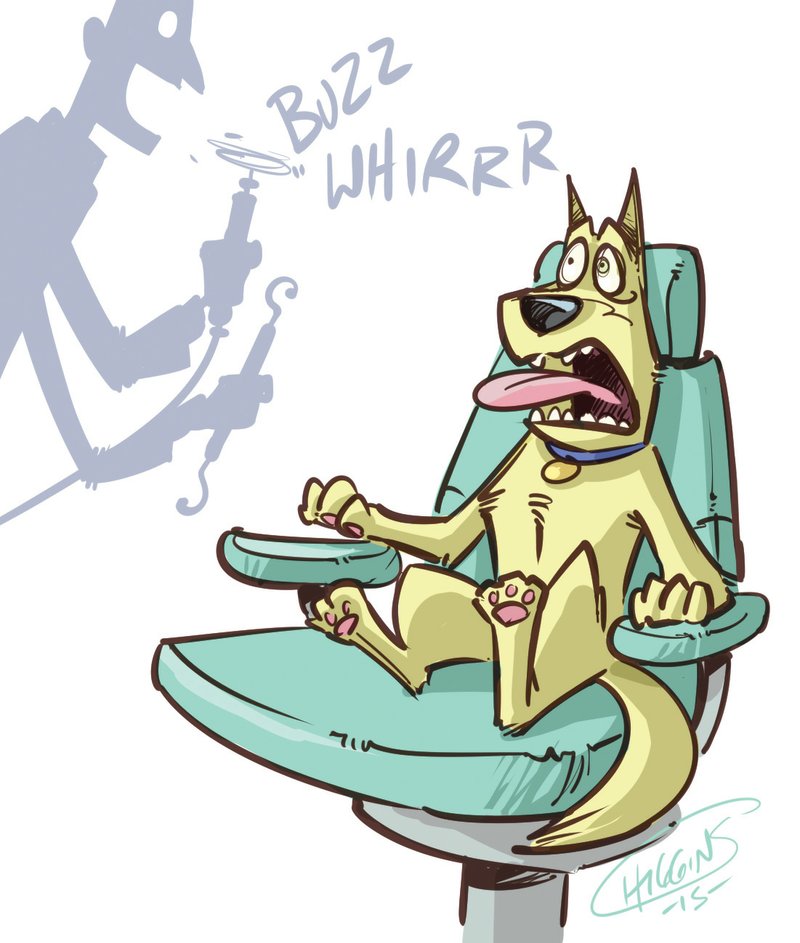My cousin lives in California. When she had her dog's teeth cleaned last week, it was done without anesthesia. When my dog and cat get their teeth cleaned at the vet's office, they are always sedated. Have you heard of dental work on pets without anesthesia?
Performing dental work on animals without anesthesia is an alternative to traditional veterinary dentistry, but apparently isn't recommended or regularly practiced by the professional veterinary community.
In non-anesthesia dentistry, a pet is awake while its teeth are cleaned and scaled. The practice has been around about a decade, but became controversial in 2014 when the American Animal Hospital Association issued guidelines requiring member hospitals to do dental cleanings only on animals under anesthesia. Because the association is the only accrediting organization for small-animal hospitals, that created a problem for clinics wanting to offer non-anesthesia dental procedures, according to a February 2014 article in Dog Fancy magazine.
Non-anesthesia dental cleanings are offered by companies such as Pet Dental Services, which began operating in California in 2006. The company's dental hygienists (who aren't veterinarians) provide the anesthesia-free option through a network of veterinary practices throughout the country. There are no veterinary clinics in Arkansas that use Pet Dental Services, according to the company's website at petdentalservices.com.
On the frequently-asked-questions section of the website, the company says pets are treated "much like a dentist treats a young child during a first-time dental visit. We use patience in our approach and slowly introduce each procedure. As we build trust, almost every cat and dog we treat will allow us to use all of the exact same tools used in traditional veterinary dentistry." The website says animals are kept calm during a teeth-cleaning session with a "variety of proprietary holds." I wasn't able to reach anyone in the company to find out what those involve, but news articles about the procedure say animals may be swaddled in blankets and addressed in a soothing voice while a hygienist removes plaque from the surface of the teeth.
The company notes that pets with severe gum disease, fractured teeth, tumors or abscesses aren't candidates for non-anesthetic cleaning. Those pets require veterinary care.
In addition to the hospital association, the American Veterinary Dental College advises against non-anesthesia dental procedures, saying it's not possible to do a complete, effective cleaning while an animal is awake. The organization (avdc.org) policy statement says "non-professional dental scaling is inappropriate."
A thorough dental cleaning, the organization explains, involves removing tartar and plaque above and below the gum line. Since tartar and plaque are removed with instruments that have sharp edges, an animal could be injured if it moves its head during a procedure. Also, an animal that's awake simply won't sit still for any length of time with its mouth open to let someone poke and scrape its teeth and gums with sharp implements.
"It doesn't work," Little Rock veterinarian Bob Hale says about trying to clean an animal's teeth without anesthesia. "You can't clean the teeth correctly, especially when you get a dog with abscessed teeth." After pulling a rotten tooth, "you have to go into that cavity and clean down to the bone. Talk about lighting a dog up -- well, you just can't clean without anesthetic."
Veterinarian Jon Southerland of Kiehl Avenue Animal Hospital in Sherwood describes non-anesthesia cleaning as an "aesthetic" procedure that can make the teeth look pretty, but doesn't address an animal's deeper dental issues. "I'm not a fan of it," he says. Echoing Hale and the American Veterinary Dental College, Southerland says preventing and treating dental disease such as gingivitis requires being able to clean below the gums. "There's pain involved in getting under that gum line, and without anesthesia, you have to quit before you can do some good."
Note: A future column will look at types of anesthesia and anesthesia procedures. Also, I'd like to hear from Arkansas veterinarians who perform non-anesthesia dentistry or work with a company that does.
Email askcreature@att.net
Family on 05/06/2015
